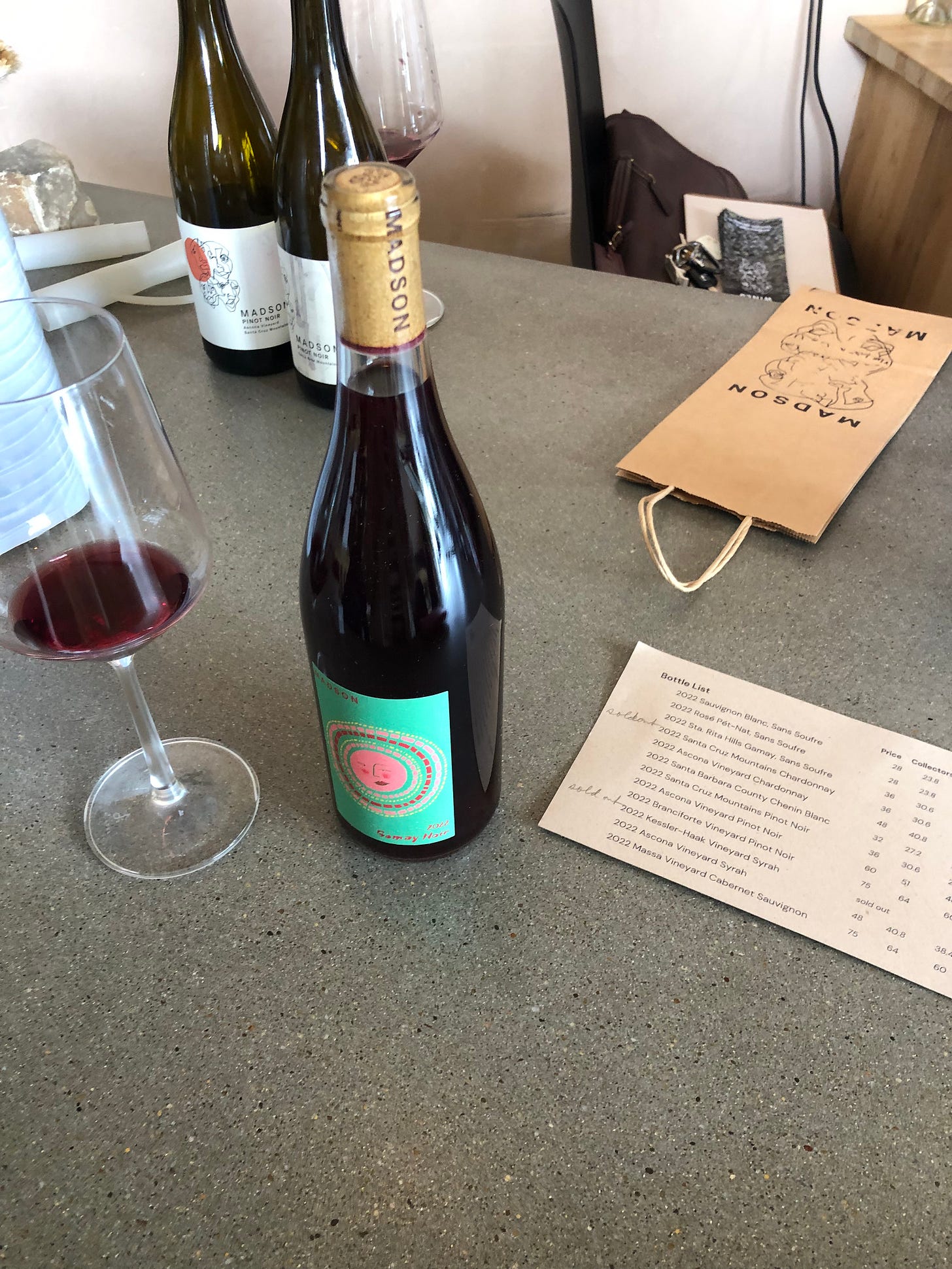A sustainable wine road trip through California
Six wineries, four days, three nights and shockingly around 35 miles to the gallon
A few weeks ago, I set off on a sustainable wine road trip up and down the coast of California. I lived in Napa once before, but I know there is more to the wine world than Napa Valley and Sonoma. I also wanted to seek out lesser-known places and people to see what the wine industry looks like through my now, somewhat sustainable lens. I started in my hometown in North Orange County, drove up the coast to Santa Cruz, with stops in Watsonville, Paso Robles, Templeton, Los Olivos, and Santa Barbara.
The Drive
I was born and raised in California, and I have never seen the state so green. The ride is very different depending on which highway you take. The 1 (Pacific Coast Highway) hugs the coast and gives you a constant view of the ocean, but of course, it’s the slowest. The fastest route is The 5 freeway, which runs all the way from Mexico to the Canadian border. In my experience driving up and down The 5, most of the time, there is nothing much to see but land, and not very green land. For this reason, I opted for 1The 101, for the views, the vibe, and the proximity to where I was stopping. I listened to Speak Now Taylor’s Version and few times (because I resonate the most with that album) along with my favorite band, The Wonder Years and a few episodes of Dax Shepard’s Armchair Expert podcast. The episode with Trevor Noah was lovely.
Day 1 Piazza Family Wines + Luna Hart in Los Olivos
Thanks to traffic, and construction, I was 1.5 hours late to my appointment with Gretchen, the winemaker from Piazza Family Wines, and her own label Luna Hart. She has a background in plant sciences and lived in Belgium for a brief period before starting her own wine brand, Luna Hart. From there she became the full-time winemaker for Piazza Family Wines. She pulled wine straight from the tank as the wines were almost ready to be bottled. She told me that she doesn’t consider herself a creative person, but more scientific and precise. However, with winemaking, there is a way to have a foot in both camps. She makes wines with as little intervention as possible, and the wines remain unflawed and true to style, something that the natural wine industry often gets slack for. We tasted Grüner Veltliner, Sauvignon Blanc + the skin contact version, and Syrah, a grape which the nursery mistakenly told them was Mourvèdre originally. We walked around the vineyard, doggie in tow, and she showed me their newest plot of all Italian varietals including Nebbiolo, Sangiovese, and Montepulciano. As you can infer, the wineries I visit and aim to work with do not use artificial inputs in the vineyard such as herbicides, pesticides and artificial fertilizers.
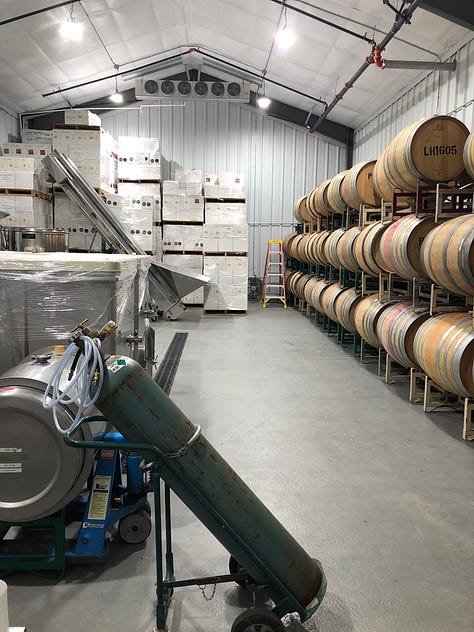
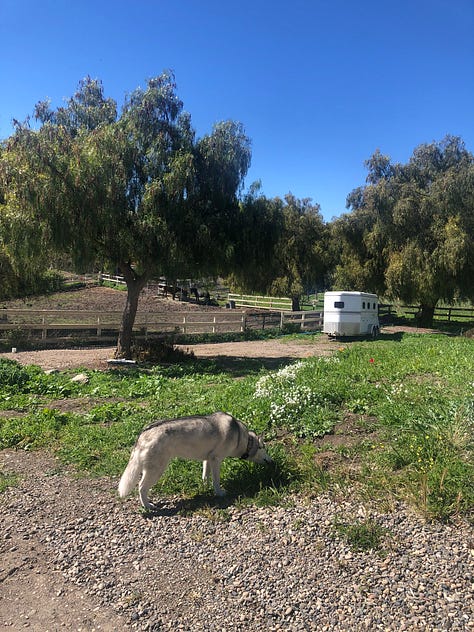
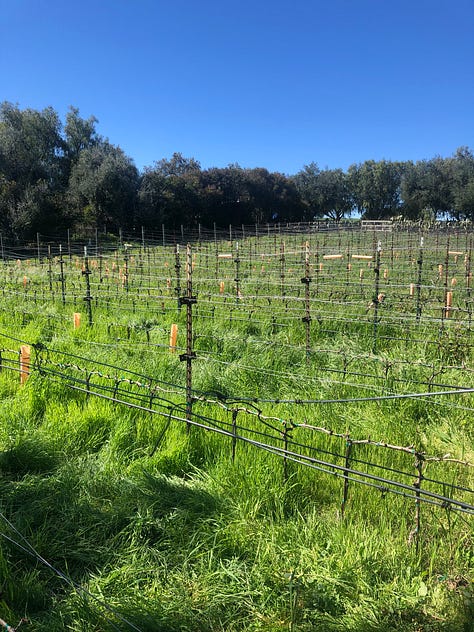
Day 2 Madson Wines in Santa Cruz
I talked to the winemaker Cole over the phone a month ago. I found his story interesting so I had to try the wines in person. I originally reached out to Madson Wines because I was working on an article that aimed to outline the similarities and differences between RAW Wine and Slow Wine – both are wine organizations that support low–intervention wine. Raw Wine is strictly focused on natural wine producers, while Slow Wine does not use the term natural to describe their participating wine producers. At the end of the day, both organizations are fighting towards the same goal-the goal to stop wine drinkers from only buying wine from the big-box wine stores. It’s more nuanced than that, but for now, that's the elevator pitch. In Madson’s cellar, which lived in the parking lot of a natural food grocery store, we tasted Aligoté and Pinot Noir from the barrel and they were divine, but unfortunately out of my budget. That’s the biggest hurdle with USA wines, the good stuff is always over $30. And it should be. The cheaper something is, the higher likelihood that something (or someone) down the value chain is getting cheated. Cole explained to me that during harvest, the cellar is a mad house. He is not only making wines for his brand, but he also makes wine for 10 other clients, all in the same space.
Day 3 Stirm Wine Co. in Watsonville
Have you ever bought strawberries from the grocery store? They are usually suspiciously plump, and in plastic containers; regardless of what season it is in the year, they are always for sale. It’s likely if you have bought strawberries from that very-recognizable-brand, odds are they were farmed in Watsonville. Driving to Stirm Wine Co.,I passed abandoned farming equipment, old chevy trucks and strawberry fields after field after field. When I pulled up the winery, I was hesitant at first, it hardly looked like a wine cellar, more like an old barn, which in fact it was. Ryan had leased the cellar and the plot of connecting land for Stirm Wine Co. Another aspect of the wine industry that makes USA wines inherently more expensive. Land is expensive and there are very few acres of unowned land suitable for growing grapes. You should google ‘What the price of an acre costs on the Napa Valley floor’...The wines we tasted pleasantly surprised me. Riesling, rosé made with Zinfandel (funny how everyone bashes on White Zinfandel but there’s obviously a reason it was/still is so popular) and Cabernet Pfieffer, a grape I had never heard of before. The grape is known as Mourtaou/Mancin in Bordeaux but San Benito County is the only other place in the world, it’s grown.
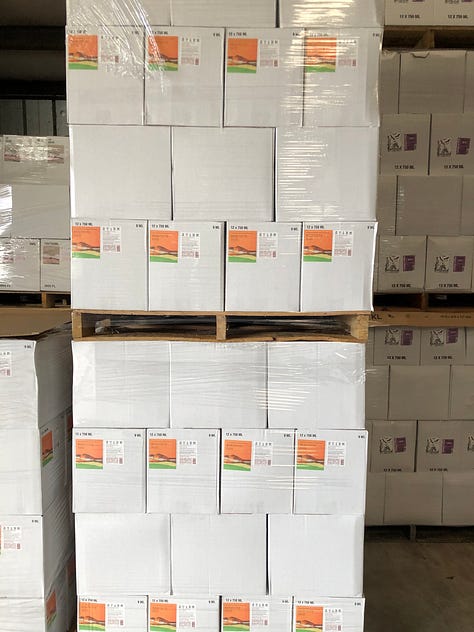
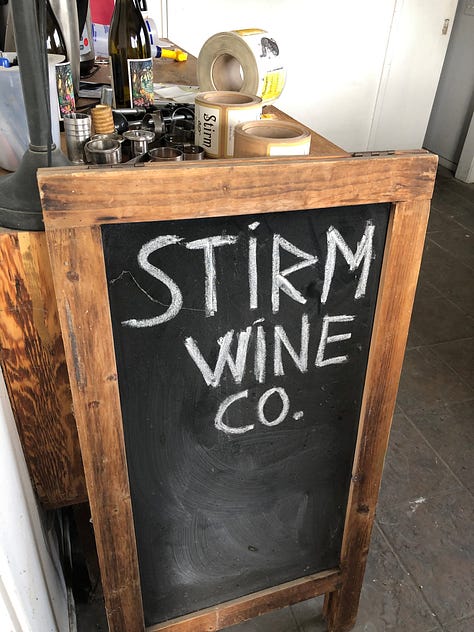
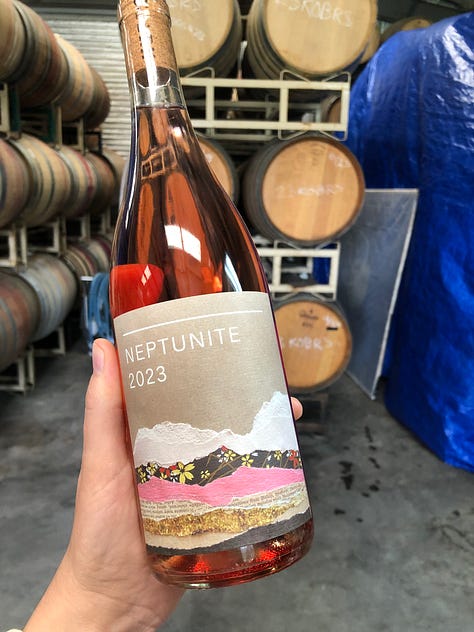
Still Day 3 Giornata Wines in Paso Robles
It was 3:45pm and I knew that arriving anywhere at this time normally is a major industry faux pas. But Giornata Wines was one of the top places on my list to visit as they were making California wines with Italian grape varieties. If you know me that has my name written all over it. I’ve been in this funk lately, because as much as I adore Italian wine and crave a bottle of Malvasia or Fiano over Chardonnay, shipping wine halfway across the country just doesn’t align with my ethos anymore. I am in California, I do everything in my power to shop locally, and buy California grown/made products, wine should be included in that equation. Unfortunately, California dug itself into a trap in the 80s & 90s by planting Chardonnay and Cabernet Sauvignon grapes extensively to meet the demands of influential wine critics, which at the time were gaining popularity with consumers. Giornata proved that there is hope for me yet and it is possible to find grapes (and wine styles) I like to drink that support California’s local economy, rather than rely on products being shipped over from Italy. This is largely due to Stephy, the farmer and vineyard liaison who worked with other local farmers around Paso Robles. The farmers had either previously planted these grapes, or they were willing to plant these varieties on behalf of Giornata’s vision. Grape varieties they make wines from include Sangiovese, Montepulciano, Nebbiolo, Fiano, and Vermentino.
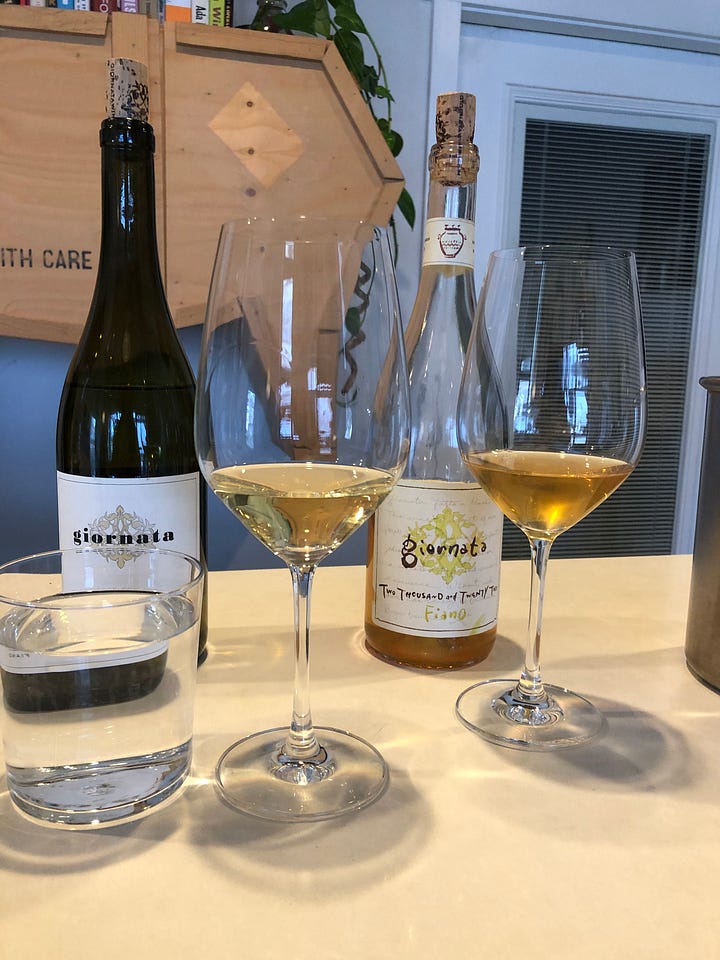
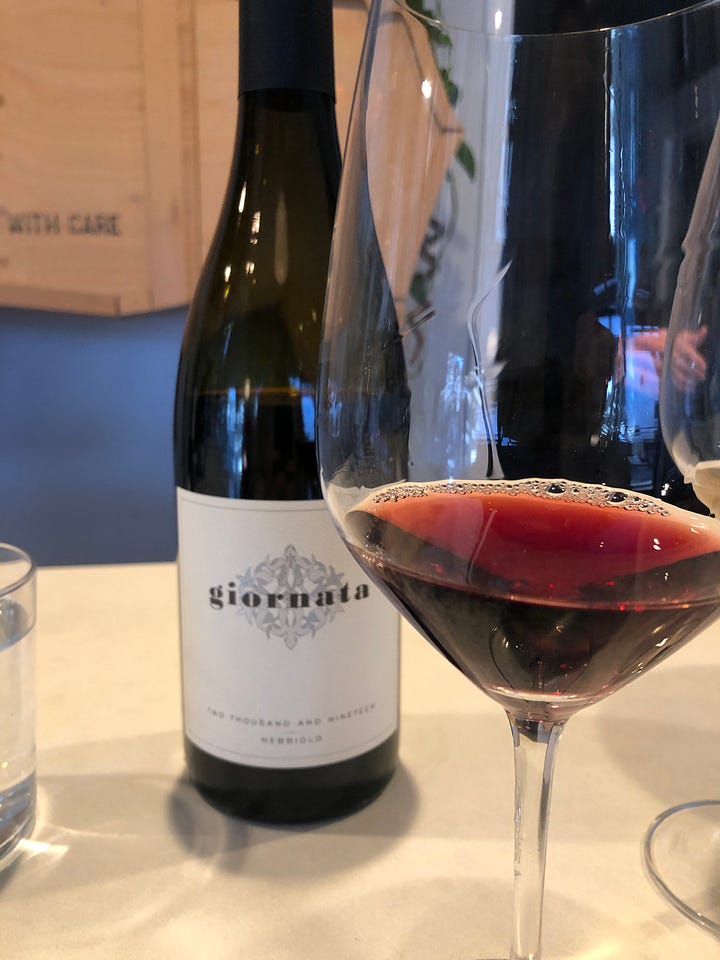
Not only was I impressed by their wine, but owners Brian and Stephy also own a Pastificio called Etto. Brian (Stephy’s husband) spent time in Florence in his 20s and when he came back to the states, he was disappointed with the taste, quality and selection of dried pasta available in the stores. So, he decided to make his own. They use traditional bronze dies with a variety of shapes, slow-drying methods, and to keep the locality principles intact they sourcing their flour from farms in the US. They mentioned that it is near impossible to find California grain specifically for pasta-making, so they have to source Semolina flour from other states. But, hey this is better than sourcing grain from abroad. Etto pasta products are sold online, and in their Italian market which is attached to their restaurant. I was overwhelmed with how great the pasta tasted, the texture, the firmness and the consistency. After eating pasta in Italy for two years I like to think that I am good judge for this sort of thing. Living in California, it doesn’t make sense to buy wine and food products like pasta and wine from Italy – the carbon footprint due to transportation is too great to ignore anymore, sourcing Giornata Wines an Etto pasta is a great solution.
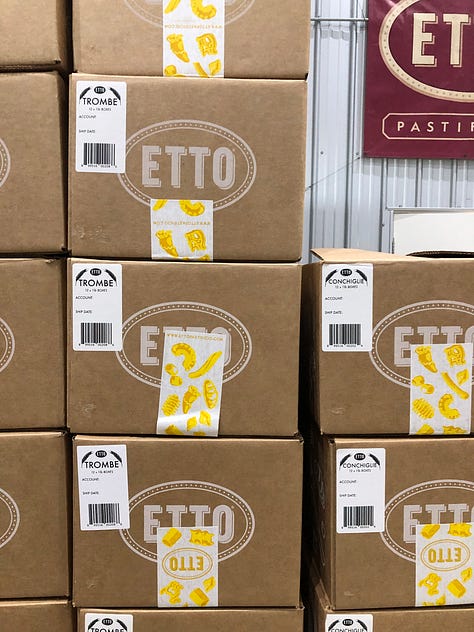
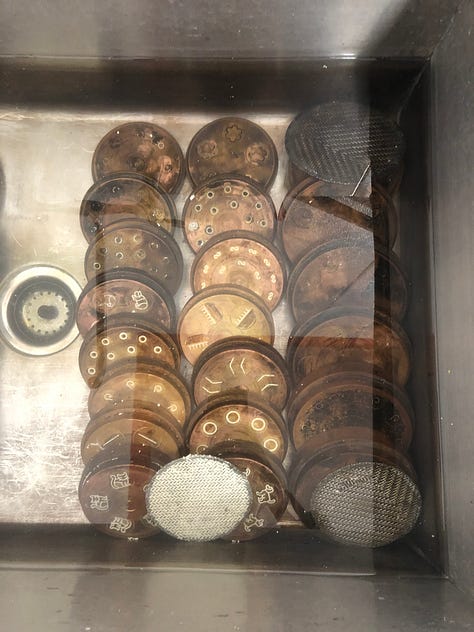
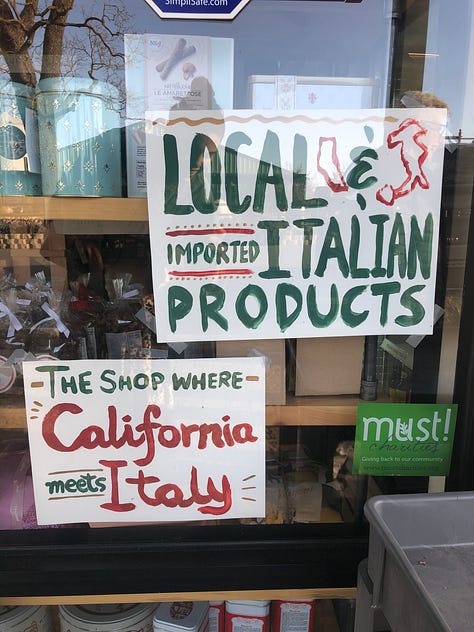
Day 4 Ambyth Estate in Templeton
Terracotta vessels, olive groves, and one of the most beautiful drives through not quite the countryside of Templeton. I reached out to Ambyth Estate because I was curious to learn about their olive oil production. The winery and vineyards are family owned and now the son and his wife are running the operations. They didn’t have much training in the wine business (no attendance at a university known for viticulture and winemaking studies) but they learned by doing and by being on the land and in the cellar, themselves. Ambyth was the first Demeter certified Biodynamic winery in Paso Robles. They farm organically (obviously) and practice regenerative agriculture. Their wines are made naturally without additives or adjuncts. One of the coolest aspects of their wine production was the amount of terracotta vessels they had in use in the winery sourced from Italy, California and Australia. We tasted their Grenache Noir, Zinfandel and Chenin Blanc, all of which I didn’t expect to find in Paso Robles. Most of the wines are available for purchase, and wines tasted, are from older vintages. Older vintage wines tend to be more expensive because the winery must store them themselves and internalize the cost of the wines not being on the market. However, wine deserves some time to age, or at least relax in the bottle for a few years (most winemakers say their wines are consumed too young). Their 2014 Zinfandel is priced at $40 – that’s a 10-year-old wine. If it counts for anything, Zinfandel is one of my least favorite grapes, but I was so impressed at the house tasty that wine was.
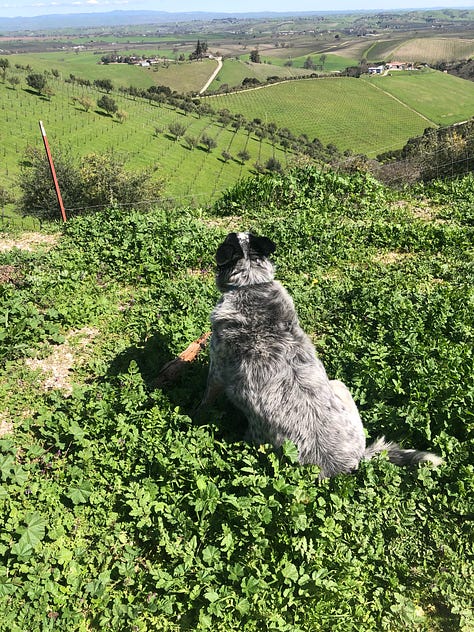
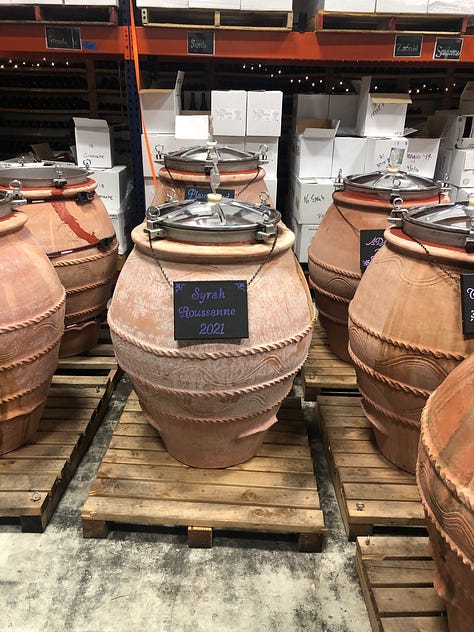

A Pit Stop in Santa Barbara
I stopped in Santa Barbara on the way home. It was essential. I could either sit in traffic for five hours on a Friday afternoon going through LA or visit an old friend in one of the most beautiful cities in California. Ironically, this friend is a winemaker, too. And I met them at their winery, and we took the unofficial tour of the grounds; i.e. riding the Gator through the vineyards. We had dinner at a trendy wine bar downtown. To give you a better idea of its trendiness: beers were served in Mason jars, a server was doing card tricks for his table, and my friend, and I kept laughing at the giant indoor plant that took up way too much space on the bar top. We ordered a bottle of Grüner Veltliner which his friend imported, ironically it was least “natural” and the least expensive on the list. (I think there’s a lesson in there). I know this because he does not drink natty wine, and we have had many conversations about the fact that natural wine does not mean the same in the USA as it does in Italy and in France (where he is from). If I had to categorize the wines I tasted and the places I visited on this trip, I would call them natural because they utilize, all follow the same 2principles presented by Raw Wine and of course they follow the 3Slow Food Manifesto for good, clean and fair wine. That’s why I sought them out in the first place. So, if the term natural is still so problematic, why doesn’t the wine community adopt the word slow, instead? The term low intervention doesn’t have the same ring to it from a marketing perspective. People are not coming into big-box wine stores asking for low-intervention wine, they are asking for natural.
The Conclusion
Many of the places I visited were wineries that lived in warehouses, garages, and barns, but I prefer those experiences over large estates with iron gates and half mile long driveways. Everyone I got the chance to meet taught me more than I anticipated learning. I am all about context, and a road trip is the best way to not only experience where the wine is made, where the grapes are grown, but how the surrounding area is an influencing factor. I conducted a similar trip while in Italy, although my wine journey spanned over five months, not five days, but all in all, the reasons for going remained the same. I wanted to gain a deeper perspective and real insight into wineries that are working “sustainably.” That definition is still pending.
*If this piece feels a little rocky and rough drafty-it’s because it is. I originally set out to meet with these producers to interview them formally for a more journalist article, but along the way I realized I just wanted to drive, listen to music, enjoy the open road, try tasty wine and have a breakfast burrito for breakfast every morning (which I did).
Californians are known for adding the article “The” to freeway names.
“...it is generally agreed to be wine that is farmed organically (biodynamically, using permaculture or the like) and made (or rather transformed) without adding or removing anything in the cellar. No additives or processing aids are used, and ‘intervention’ in the naturally occurring fermentation process is kept to a minimum. As such neither fining nor (tight) filtration are used. The result is a living wine – wholesome and full of naturally occurring microbiology.”




